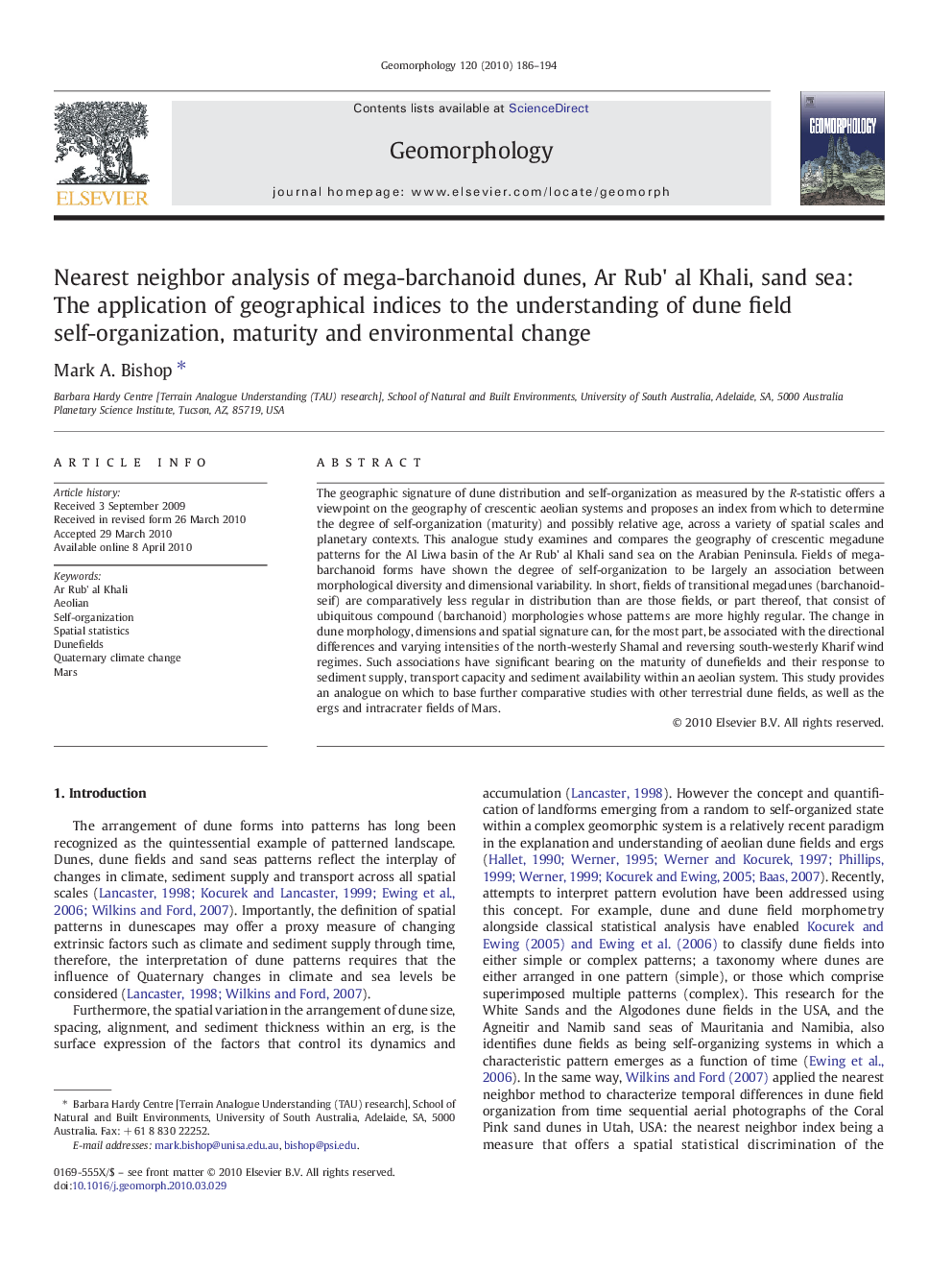| Article ID | Journal | Published Year | Pages | File Type |
|---|---|---|---|---|
| 4685750 | Geomorphology | 2010 | 9 Pages |
Abstract
The geographic signature of dune distribution and self-organization as measured by the R-statistic offers a viewpoint on the geography of crescentic aeolian systems and proposes an index from which to determine the degree of self-organization (maturity) and possibly relative age, across a variety of spatial scales and planetary contexts. This analogue study examines and compares the geography of crescentic megadune patterns for the Al Liwa basin of the Ar Rub' al Khali sand sea on the Arabian Peninsula. Fields of mega-barchanoid forms have shown the degree of self-organization to be largely an association between morphological diversity and dimensional variability. In short, fields of transitional megadunes (barchanoid-seif) are comparatively less regular in distribution than are those fields, or part thereof, that consist of ubiquitous compound (barchanoid) morphologies whose patterns are more highly regular. The change in dune morphology, dimensions and spatial signature can, for the most part, be associated with the directional differences and varying intensities of the north-westerly Shamal and reversing south-westerly Kharif wind regimes. Such associations have significant bearing on the maturity of dunefields and their response to sediment supply, transport capacity and sediment availability within an aeolian system. This study provides an analogue on which to base further comparative studies with other terrestrial dune fields, as well as the ergs and intracrater fields of Mars.
Related Topics
Physical Sciences and Engineering
Earth and Planetary Sciences
Earth-Surface Processes
Authors
Mark A. Bishop,
